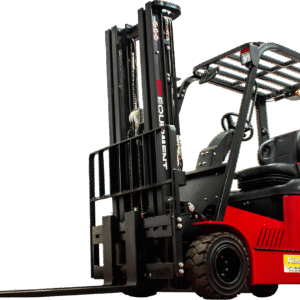The satellite propulsion system industry is entering a period of dynamic expansion and technological transformation. According to the MRFR report (Report 4608), the global market was estimated at USD 11.50 billion in 2024 and is projected to surge to USD 34.15 billion by 2035, reflecting a 10.40 % CAGR over the forecast window. This robust growth narrative is propelled by a confluence of market forces, technological evolution, and new mission paradigms.
Key Growth Drivers
1. Surge in satellite deployments and constellation programs
One of the primary engines driving market expansion is the proliferation of satellite launches, especially in Low Earth Orbit (LEO) constellations for broadband, Earth observation, and IoT services. As more satellites take to orbit, demand for onboard propulsion—both for orbital insertion and ongoing station-keeping—rises proportionally. MRFR explicitly cites the rising demand for LEO-based solutions as a core motivator for market growth.
2. Government & private investments in space infrastructure
National space agencies, defense programs, and commercial space ventures are ramping up budgets. Whether for scientific missions, national security, or commercial broadband networks, these investments translate into more satellites needing propulsion systems. MRFR highlights government funding and heightened public–private activity in space as critical enablers.
3. Technological innovation — efficiency, green propellants, miniaturization
Advances in electric propulsion (Hall effect, ion thrusters, pulsed plasma thrusters) are reducing propellant mass and improving specific impulse. Concurrently, the industry is gravitating toward green propellant technologies (less toxic, safer to handle) to meet safety and environmental constraints. MRFR’s segmentation and trend analysis emphasize that new propulsion modalities will play an increasingly prominent role.
Miniaturization is another critical trend: small and microsatellite platforms demand compact, low-power propulsion units (e.g. micro-electrospray systems or pulsed plasma thrusters) that deliver acceptable performance within severe constraints. MRFR discusses these propulsion types (cold gas, PPT, green liquid, iodine Hall, solar sail, ambipolar thruster) in its segmentation.
4. In-orbit servicing, refueling & extended life missions
As satellite operators seek to extend mission lifetimes, repair or refuel satellites, or mitigate debris, propulsion systems capable of rendezvous, docking, and maneuvering become more valuable. This opens a new vertical within the propulsion market. MRFR mentions the opportunity for propulsion systems that support advanced mission architectures, including servicing.
5. Regional growth dynamics
While North America remains the dominant region (thanks to NASA, U.S. defense, and established aerospace firms), MRFR projects that Asia-Pacific will grow at the fastest pace, spurred by rising domestic space programs, R&D investments, and growing commercial satellite activity.
Emerging Trends to Watch
-
Green / non-toxic propellants will gain traction, easing handling constraints and regulatory hurdles.
-
Hybrid propulsion systems, combining chemical and electric modes, will allow versatile mission profiles.
-
Modular, plug-and-play propulsion units—standardized interfaces and compact modules—will streamline integration across satellite bus variants.
-
AI / autonomy for propulsion control to optimize thrust, reduce fuel use, and manage collision-avoidance maneuvers.
-
Propulsion-as-a-service and leasing models, where constellation operators lease or modularly upgrade propulsion subsystems instead of owning all hardware.
Opportunity Spaces & Strategic Imperatives
To capture value in this emerging market, players (OEMs, startups, integrators) should consider:
-
Focusing on niche sub-segments: small / micro satellites, in-orbit servicing, high-efficiency electric propulsion
-
Investing in R&D for green propellants to preempt regulatory or safety barriers
-
Cultivating partnerships with satellite integrators, space agencies, and launch providers to lock in early-stage adoption
-
Building scalable manufacturing & supply chain capabilities to meet anticipated volume growth
-
Expanding regional footprints, especially in Asia-Pacific, to serve domestic space markets
Outlook & Risks
While the roadmap is bright, risks remain. Development, qualification, and certification of new propulsion technologies is capital- and time-intensive. Integration complexity, power/thermal constraints on satellites, and reliability demands (fail-safe, redundancy) impose stringent design trade-offs. Moreover, export controls and technological sovereignty in many markets may limit cross-border growth.
Overall, the MRFR forecast underscores a strong multi-decade tailwind. For stakeholders who align technical innovation with market positioning and regional strategies, the satellite propulsion system market offers a compelling opportunity for growth and differentiation.
Outlook & Strategic Recommendations
Looking ahead, several strategic priorities emerge:
-
Flight qualification & heritage building
To reduce adoption risk, propulsion providers should accumulate flight records, ideally via small demonstration satellites or piggyback launches. -
Modular, plug-and-play designs
Emphasizing standardized interfaces (mechanical, electrical, data) can reduce integration cost and time across satellite platforms. -
Focus on mid-tier mission domains
While deep-space and high-end missions are appealing, many commercial satellites lie in LEO/MEO. Focusing on cost-efficient systems for these domains may yield near-term returns. -
Research & development in green propellants and hybrid systems
Innovations in safer, non-toxic propellants and hybrid architectures will carry strong regulatory and market appeal. -
Regional capacity building
Establishing regional production, certification, or support hubs (especially in Asia-Pacific) may help bypass import/export restrictions and gain local customers. -
Collaborative R&D and public–private partnerships
Engaging with space agencies, universities, and governments can help de-risk development and gain access to funding.
In closing, the MRFR market forecast underscores a long runway for growth (USD 11.50 billion to USD 34.15 billion by 2035, ~10.40 % CAGR) . But realizing that growth will hinge on overcoming technical, regulatory, and integration barriers. Stakeholders who balance rigorous research, prudent risk management, modular design, and regional deployment strategy will be best positioned to succeed in the evolving satellite propulsion ecosystem.



